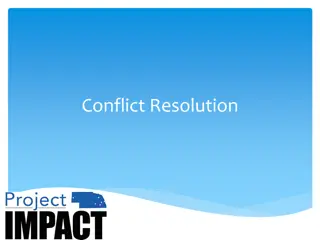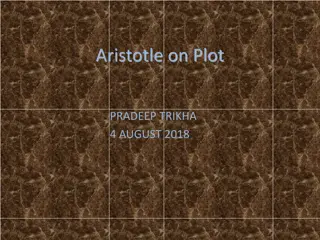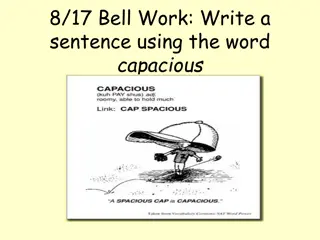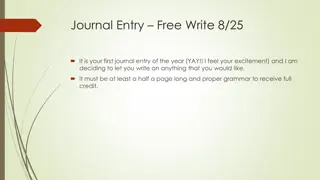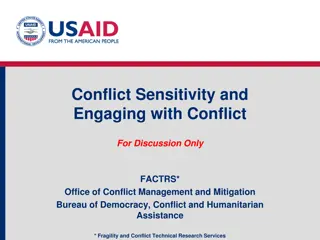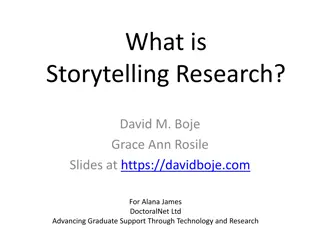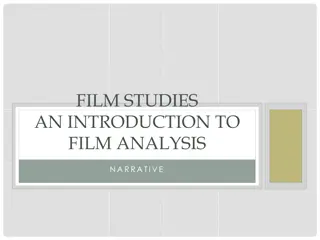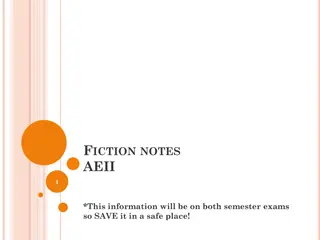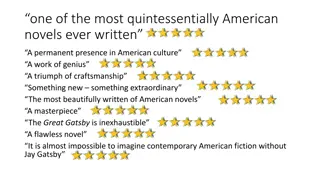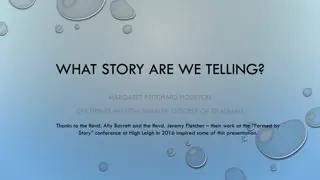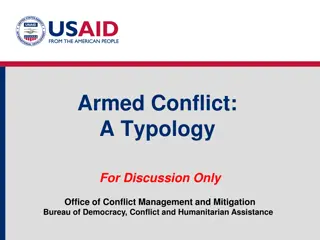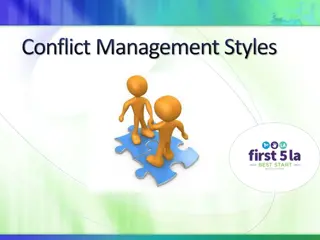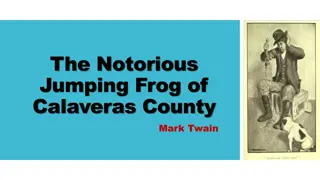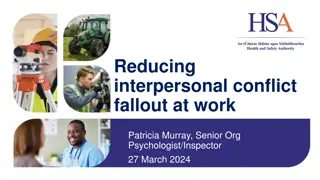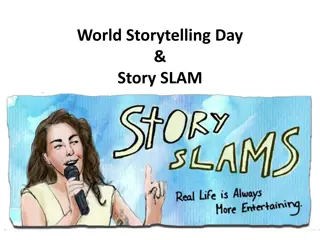Understanding Plot Structure and Conflict in Storytelling
Plot structure is a key element in storytelling that outlines the sequence of events in a narrative. It consists of the exposition, rising action, climax, falling action, and resolution. Additionally, conflicts drive the plot by creating tension and obstacles for the characters to overcome, such as internal, external, character vs. character, character vs. nature, and character vs. society conflicts.
Download Presentation

Please find below an Image/Link to download the presentation.
The content on the website is provided AS IS for your information and personal use only. It may not be sold, licensed, or shared on other websites without obtaining consent from the author. Download presentation by click this link. If you encounter any issues during the download, it is possible that the publisher has removed the file from their server.
E N D
Presentation Transcript
PLOT STRUCTURE Plot is the literary element that describes the structure of the story. Plot shows the causal arrangement of events and actions within a story.
PLOT STRUCTURE: EXPOSITION Example Sets the scene Author introduces the setting and characters Provides description and background information
PLOT STRUCTURE: RISING ACTION Series of conflicts and crises in the story that lead to the turning point Example
PLOT STRUCTURE: CLIMAX Example Also called the turning point Event that the rising action and central conflict leads up to Place where plot turns or changes direction toward a resolution
PLOT STRUCTURE: FALLING ACTION Events that happen as a result of the climax as the conflict grows closer to being resolved Example
PLOT STRUCTURE: RESOLUTION Main conflict is solved or resolved Example
CONFLICT Without conflict, there is no plot! Usually introduced during the rising action Faced head-on during the climax Begins to work itself out during the falling action Is resolved during the resolution
CONFLICT Internal External Character vs Him- or Herself Struggle takes place in character s own mind Usually something to do with choice or overcoming emotions or mixed feelings Character vs Character Protagonist vs antagonist Character vs Nature Usually character is struggling to survive Character vs Society Group of characters fighting against society Character fights against social traditions or rules
OTHER TYPES OF CONFLICT Character vs Supernatural Gods, ghosts, monsters, spirits, aliens, etc. Character vs Fate Fight for choice; fight against destiny Character vs Technology Computers, machines, etc.
THEME The theme is the universal message about truth or life that is communicated by a literary work Life lesson Meaning Moral Message about life or human nature Theme is NOT just one word like love, or happiness Theme is expressed in at least one sentence: Money can t buy happiness It is better to die free than live under tyranny
HOW DO WE FIND THE THEME? Sometimes explicit (directly stated) Most often in fiction, the theme is implicit (hinted at or suggested) Themes can be inferred through: Metaphors Similes Personification Imagery Tone of voice Symbols
TIPS FOR IDENTIFYING THE THEME Look closely at the title for clues Look for ideas that are repeated more than once Look for lessons that the character(s) learns Think about what happens in the story and how it can apply to real life



